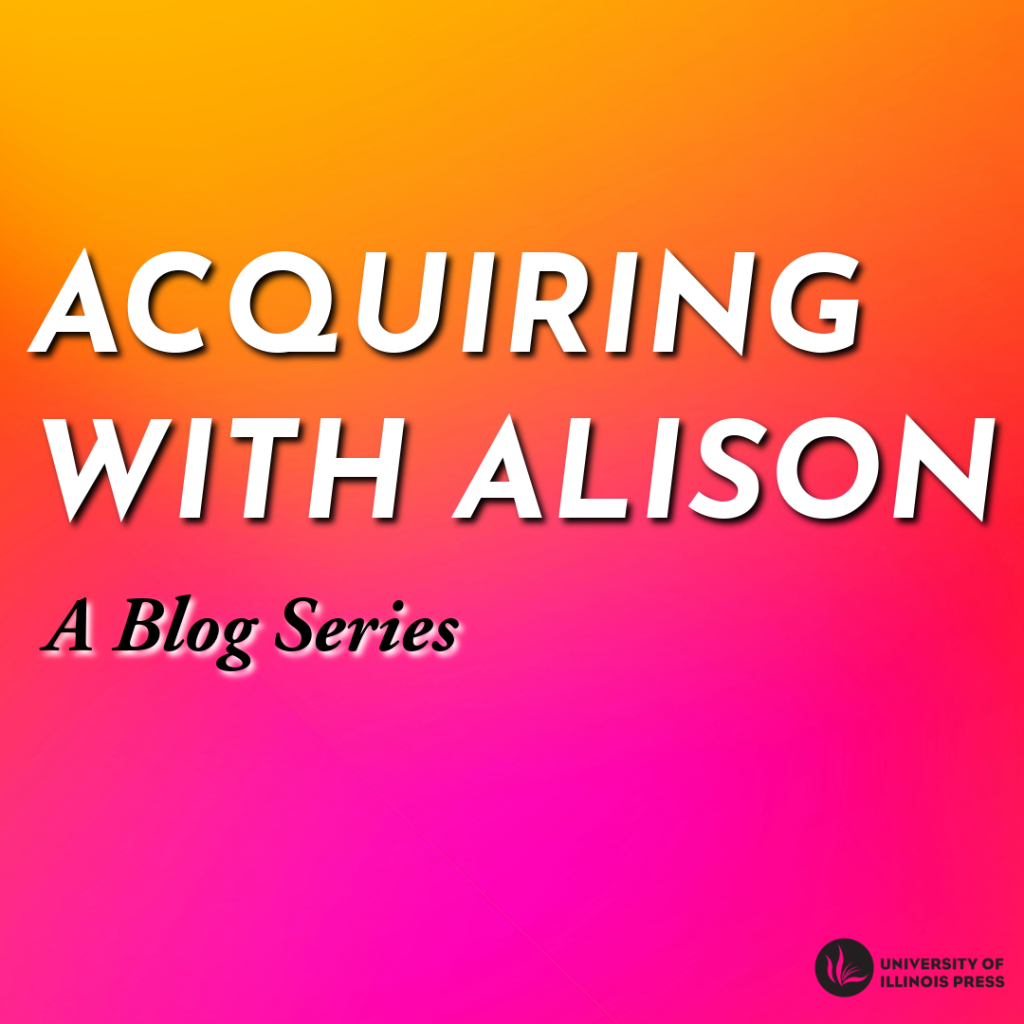What are some best practices for peer review?
While peer review can sometimes feel like an alchemical process that comes together with much luck and magic, I’ve learned many lessons that help me navigate it better in 2025 than I did in 2020. First, if you haven’t read the Association of University Presses’ Best Practices for Peer Review, I highly recommend doing so. This document will help all stakeholders understand the peer review process at scholarly presses and the best pathways through it.
I also have a few suggestions for authors and peer reviewers, to make the process move as smoothly as possible.
FOR AUTHORS:
- Listen to your editor. If they don’t think your work is ready for peer review, understand that their advice comes from a place of experience. While I’m not an expert, I read a lot of scholarly work and a lot of reviewer reports. I also have series editors who are experts. I know what reviewers expect, and I can often flag elements that aren’t working up to those expectations. Revising a bit before peer review can also sometimes make for a better peer review experience, because you’ve cleaned up some elements so that the reviewer can focus on the scholarship. Going to peer review too early can also damage your chances of getting a contract if the reviewers don’t think your work is ready.
- Take your time. Take your time to prepare your materials to the best of your ability, but also take your time in reading, considering, and responding to feedback. While you might not always agree with reviewers, if you sit with feedback for a while, you can often see your way toward a useful revision that will make the work better.
- Put your work away while it’s out for review. Editing and revising our own work is really hard, but it is especially hard when we never have a break from it. The best thing you can do for your project is to set it down while it is out for review, so that you can come to it with fresher eyes once the reports are in.
- Speak up. More likely than not, when you send material out for review, you will get recommendations for revision in one way or another. At the same time, if one of the recommendations doesn’t sound like it is in the best interest of your project, talk to your editor. The best time to find a way through this feedback is when you receive the reports and are writing your letter of response. Your editor has a broad understanding of your project, the field, their colleagues, and their boards, and they should be able to help you navigate suggestions that you don’t feel are right to take up (as well as the ones you will take up!).
FOR REVIEWERS:
- Diagnose, don’t prescribe. If you think something in the review materials needs revision, describe what you are seeing instead of telling an author how to fix it. For example, if a manuscript doesn’t seem well organized, describe where you get thrown off and how that interferes with your understanding. Don’t just tell them to reinforce the chronology. By diagnosing an issue, the author may be able to provide their own prescription for revision.
- Describe your reading experience. Much like above, it is helpful for an author to understand what reading the manuscript felt like to a reviewer. Where did the manuscript slow down? Where did it move too quickly? Where did the reviewer lose track of the argument? Where did the evidence seem not to support a conclusion? Where has the author offered too many examples? Often the author knows so much about this topic that, at this stage, they may not have calibrated the manuscript quite right. By describing your reading experience, you can help the author appeal to an interested reader who is nevertheless not as well informed as the author!
- Use examples. When possible, it is helpful to cite specific instances in a manuscript that led a reviewer to make a suggestion. For example, if a manuscript struggles transitioning between sections, cite an example of a clunky transition. Likewise, if a reviewer encounters an example that works better, cite that too. It can be difficult for authors to revise effectively if they don’t understand exactly where they’ve missed the mark, and I can’t always interpret feedback—especially if I don’t see the same issues myself. Some reviewers will choose to annotate the proposal or manuscript itself, but even citing examples within the report is helpful.
- Don’t copy edit during peer review. While reviewers are oftentimes excellent writers themselves, with great command of grammar and style, it isn’t their job to copy edit what is essentially a draft. At this stage, we are concerned with macro-level issues. There is no point in copyediting a chapter that the author will drop for the final manuscript. Peer review feedback should fit the moment, which is concerned with large issues like argument, evidence, and organization, not comma splices.
- Be dependable. There is much that isn’t ideal about the peer review process. Reviewers get honoraria, if they get compensated at all, and the labor that goes into providing a good review is significant. This labor counts toward “service,” but so do a lot of other things—committee work, mentorship, conferences, and so on. Academics and alt-acs alike are consumed with more work than they can possibly do. At the same time, scholarly publishing relies on peer review; we cannot publish work without it, at least not as we currently exist. If you have published a book with a scholarly press, at least two scholars have taken on this labor on behalf of your work. Please pay it forward and do the same for other scholars.
At the same time, if you run into a time crunch, alert the editor. Ask for extensions or let the editor know right away if you can’t complete the report. They will likely need to secure someone else, sooner rather than later. And don’t feel compelled to take on reports that you don’t have time to deliver. It’s easier for editors to move on to querying another scholar rather than navigating delays and missing reports later on. - Provide separate comments to the editor. I often find it useful when reviewers offer comments specifically to me, as an editor, outside of the reviewer report. Sometimes this happens because reviewers want to underscore a specific aspect of the report; for example, they might have asked for significant revision, but they want to underscore to me that this project is important for the field, and I should work with the author to develop it. These types of comments can really help an editor wade through what are sometimes complex disciplinary concerns or help us prioritize where to spend our limited time.
*****
Check out a recent guest post from Alison about artificial intelligence and peer review in scholarly publishing on The H-Net Book Channel’s Feeding the Elephant: A Forum for Scholarly Communications.

Alison Syring is an acquisitions editor at the University of Illinois Press. She has degrees in English literature and history from the University of Maryland, an MA in writing from Johns Hopkins University, and an MFA in creative writing from the University of Illinois. She started in publishing as a production editor and worked for several years as a technical writer. Alison began as a Round the Press intern through the graduate English department, after which she was hired as a full-time assistant editor. She has been acquiring in history and religion since 2020. Alison continues to acquire and grow a flagship series—the Working Class in American History series; diversify our Mormon studies list and broaden into religious studies; and maintain our commitment to early-career scholars by starting an Outstanding Dissertation in Disability History prize published through our Disability Histories series.

